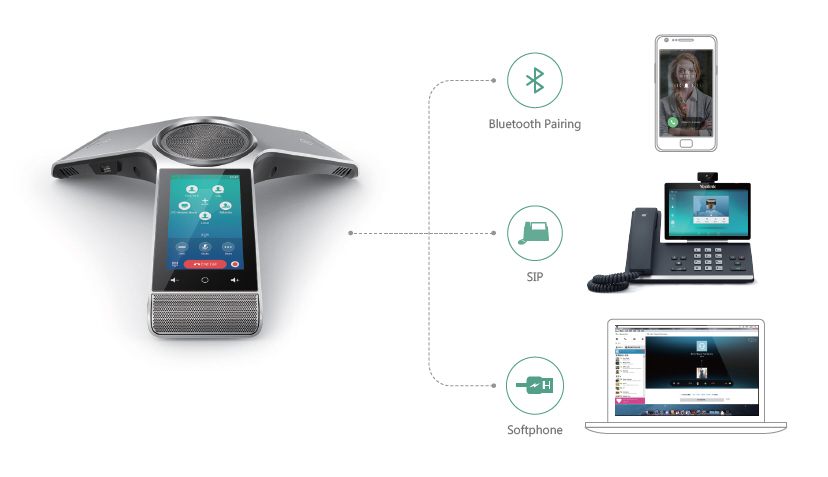In today’s fast-paced digital world, communication has become the backbone of effective learning environments. The rise of technology has transformed traditional teaching methods, and one significant advancement is the implementation of Voice over Internet Protocol (VoIP) phone systems. With the ability to facilitate seamless communication, VoIP phones are making waves in educational institutions across the globe. This article delves into how VoIP phones enhance communication in learning environments and revolutionize educational practices.
Understanding VoIP Phone Systems
What is a VoIP Phone System?
A VoIP phone system allows users to make voice calls using a broadband internet connection instead of traditional telephone lines. By converting analog voice signals into digital data packets, these systems provide clear audio quality and enable various features that are beneficial for education.
How Do VoIP Phone Systems Work?
VoIP systems work by transmitting voice data over the internet. When someone speaks into a VoIP phone, their voice is converted into digital packets, which are then sent via the internet to the recipient's device. This process not only reduces costs but also enhances flexibility in communication.
Benefits of Using VoIP Phone Systems
- Cost-Effectiveness: Traditional phone services often come with high costs for long-distance calls. In contrast, VoIP phone systems generally offer lower rates or even free calls over the internet. Scalability: Educational institutions can easily add new lines or features as they expand without needing extensive infrastructure changes. Integration with Other Technologies: VoIP can be integrated with various software applications used in education, such as learning management systems (LMS) and customer relationship management (CRM) tools.
VoIP Phones in Education: Enhancing Communication in Learning Environments
The integration of VoIP phones into educational settings significantly enhances communication among students, teachers, and administrative staff. With features like voicemail to email and video conferencing capabilities, these systems foster collaboration and streamline operations within educational institutions.
Key Features of VoIP Phones for Educational Use
1. Video Conferencing Capabilities
VoIP phones often come equipped with video conferencing tools that allow educators to host virtual classes or meetings effortlessly. This feature becomes particularly useful during emergencies or when students cannot attend class physically.
2. Call Forwarding and Routing
With call forwarding options, educators can ensure that important calls reach them wherever they are—be it at home or another campus location—allowing for more flexible communication.
3. Integration with Learning Management Systems
Many modern VoIP solutions integrate seamlessly with LMS platforms, enabling educators to communicate directly with students through the system they use daily.
4. Instant Messaging Features
Real-time messaging options provided by many VoIP systems allow students and teachers to communicate quickly without needing to make a call or send an https://soundcurve.com/voip-phone-services/ email.
Enhancing Student Engagement Through Communication Tools
Fostering Collaboration Among Students
VoIP phone systems enable group calls or conference calling features where students can collaborate on projects from different locations. This fosters teamwork skills essential for their future careers.
Encouraging Teacher-Student Interaction
Teachers can easily reach out to students who may be struggling with course material or need additional support by using a quick call or message through their VoIP system.
Improving Administrative Efficiency with VoIP Systems
Streamlined Communication Among Staff Members
Administrative staff benefits greatly from using a unified communication platform like a VoIP phone system that integrates various modes of communication—calls, video chats, and instant messaging—into one user-friendly interface.
Efficient Handling of Parent Communications
Schools can improve parent-teacher interactions through direct lines provided by their VoIP systems, facilitating timely updates regarding student progress or school events.
Cost Savings Associated with Implementing VoIP Phones in Education
Switching to a VoIP phone system offers significant cost savings for educational institutions:


- Lower monthly bills compared to traditional landlines. No need for expensive hardware installations; most functions are cloud-based. Reduced costs associated with maintaining separate data networks for voice and internet services.
Overcoming Challenges Associated with Implementing VoIP Systems in Schools
While there are many benefits to adopting a VoIP phone system within educational environments, schools must also address potential challenges:
Ensuring Reliable Internet Connectivity
The effectiveness of any VoIP solution depends heavily on having a robust internet connection. Schools must invest in reliable broadband services to ensure uninterrupted communications.
Training Staff on New Technology
Implementing any new technology requires training staff members adequately so they can utilize all features effectively without hindrance during day-to-day operations.
Security Considerations When Using VoIP Phone Systems in Education
As schools increasingly rely on technology for communication purposes, prioritizing security becomes crucial:
- Implement strong passwords and encryption measures. Regularly update software and firmware to protect against vulnerabilities. Provide staff training on recognizing phishing attempts concerning online communications.
Future Trends: The Role of Artificial Intelligence in Educational Communication Tools
As technology continues evolving at breakneck speed, integrating artificial intelligence (AI) within existing platforms could further enhance communication processes within educational settings:
AI-Powered Virtual Assistants for Educators
Virtual assistants could help manage schedules efficiently while responding promptly to inquiries from students or parents alike through automated messages based on common queries received regularly.
Enhanced Data Analytics Capabilities
Utilizing AI algorithms may lead administrators toward better decision-making processes by analyzing patterns regarding student engagement levels correlated back towards specific aspects related directly back towards classroom performance outcomes connected via those interactions held online through their respective platforms utilized therein!
FAQs about Using VoIP Phones in Education
1. What is the primary advantage of using a VoIP phone system over traditional telephony?
The primary advantage lies in cost savings alongside increased functionality such as video conferencing capabilities that facilitate remote learning opportunities effectively!
2. Are there specific features tailored for educational institutions within most popular providers' offerings?
Yes! Many providers offer specialized packages designed specifically around common needs experienced among education-focused organizations like built-in integrations connecting directly back towards existing LMS platforms being utilized regularly throughout those environments!
3. How does implementing this technology impact student engagement?

By enhancing accessibility between both teachers & students alike via real-time interactions facilitated through instant messaging/voice calling options available readily whenever needed encourages active participation during lessons overall!
4. Can we expect ongoing advancements related directly back towards these types of services offered over time?
Absolutely! As demand increases alongside technological innovation occurring globally; expect numerous improvements focusing heavily upon user experience along enhanced functionalities expectedly becoming mainstream shortly thereafter!
5. What precautions should be taken regarding security when utilizing online communications technologies?
It’s essential always implement strong password policies while educating personnel regularly associated towards identifying potential phishing scams aimed specifically targeting such channels utilized throughout those setups!
6. Will switching toward new infrastructures require extensive training periods lasting several months typically?
Not necessarily! Many platforms aim toward user-friendliness ensuring minimal training required before staff members feel comfortable operating all necessary functionalities right away seamlessly thereafter!
Conclusion
In conclusion, embracing modern technologies like VoIP phones represents an opportunity for educational institutions looking forward towards improving overall instructional methods positively while keeping pace alongside evolving demands witnessed currently throughout contemporary society's landscape continuously developing rapidly! By enhancing accessibility amongst faculty/students alike fostering collaborative efforts together ultimately drives better outcomes academically speaking overall transforming traditional approaches seemingly stagnant previously into vibrant interactive experiences instead paving paths forward leading directly toward sustainable growth achievable collectively going forward beyond just mere conversations held via telephones alone today!
Through understanding how these impactful innovations shape our present-day realities moving ahead…we realize truly remarkable possibilities lie ahead ripe waiting exploration yet untapped sufficiently thus far worth pursuing diligently indeed!